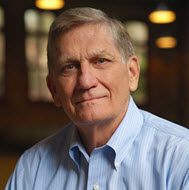The least convincing evidence for psychotropic medication use is for the treatment of the anxiety disorders. Here’s why:
Anxiety is as much a cognitive issue as it is an emotional one. Most of us experience anxiety intermittently; it rises to disorder proportions when there’s constancy to it. And when chronic, anxiety is invariably linked to faulty, irrational or illogical belief systems which require reframing to make relief attainable.
 The most clinically prominent anxiety disorders are Panic, Generalized Anxiety, Obsessive Compulsive, and Post Traumatic Stress. Here’s a look at each and what interventions they respond to most favorably.
The most clinically prominent anxiety disorders are Panic, Generalized Anxiety, Obsessive Compulsive, and Post Traumatic Stress. Here’s a look at each and what interventions they respond to most favorably.
Panic Disorder. There are two sides to the panic disorder coin. Most often panic is induced by sudden adrenalin spikes and exacerbated by stressful psychosocial phenomena. Panic attacks may also emerge out of the blue and these are likely linked to faulty wiring in the amygdala – the brain’s smoke detector. In these instances, the amygdala interprets ordinarily benign situations as threatening. Regardless of how panic manifests, it is best treated by the use of well-crafted systematic desensitization techniques and soothing guided imagery.
Because there is considerable fear as to when the next attack may occur, medication can be helpful. The benzodiazepines Xanax and Ativan have well established efficacy in treating acute manifestations of panic, but are best suited to short term use (2-4 days) to stave off possible dependence issues. Serotonin antidepressants, beta blockers and antihypertensives such as clonidine and guanfacine are often employed as maintenance medications.
Generalized Anxiety. This disorder is best described as low-level anxiety without panic. It is often accompanied by somatic complaints; most often the culprits described are stomachaches and headaches. GAD is defined by chronic worry in spite of no objective stressors. Faulty beliefs predicated on the “control value” associated with worry keep these people stuck in a perpetual cycle of rumination.
Cognitive-behavioral reframing work is essential to deescalate the intensity and frequency of the worry; such techniques remain the mainstay of treatment. The benzodiazepine Klonopin, because of its long half-life, can provide intermittent relief; serotonin antidepressants that provide measured sedation may improve outlook, decreasing the intensity and quantity of the worry.
Obsessive-Compulsive Disorder. An apt description of OCD is that it manifests as a cycle of excessive carefulness. OCD sufferers can be very exacting, meticulous and fastidious, invoking anger and frustration from those living and working within their daily sphere. Symptoms often emerge during childhood or early adolescence and unfortunately remain stable if left untreated, although there is a growing body of evidence supporting symptom reduction as one ages.
The most successful model pursuant to symptom relief from OCD is Exposure and Response prevention. This model aims to reduce the quantity and intensity of the pesky, unrelenting cycle of repetition. For example, the goal for a chronic checker would be to accept that visible and objective evidence confirms that the stove is off and the windows are locked. Behavioral work can be intense and progress tends to come slowly, often requiring the treating clinician to conduct sessions outside of the usual office setting.
Although all of the serotonin antidepressants can be utilized in OCD management, many, if not most of these, have side effects that can initially compromise treatment. Adverse effects such as anxiety and insomnia can ramp up obsessions and the accompanying behavioral rituals. Also, relief by way of SSRIs generally comes only through a doubling or tripling of the usual dosing range for these antidepressants – leading to another round of side effect exacerbation. The old cyclic antidepressant Anafranil can be helpful; it is however quite sedating for most OCD sufferers.
Post Traumatic Stress Disorder. PTSD is undeniably linked to trauma – experienced directly or indirectly. The disorder is often accompanied by major depression and panic attacks. The antihypertensive medication Minipress (prazosin) has been utilized with some success in deconsolidating traumatic nightmares, reducing the intensity and vividness of the flashbacks. And of course, antidepressants are employed to manage mood and anxiety-related dysfunction.
Engaging the PTSD-affected individual in behavioral therapies is paramount. Symptom improvement is contingent upon two factors: (1) making the fight-or-flight response come to an end; and (2) helping the identified individual to better use their imagination to create new, healthier realities. The eventual goal is to move the individual to the present as opposed to continuing to view life through the lens of the trauma.
Eradicating anxiety is not an attainable goal, we all have it, and frankly, that’s a good thing as a controlled measure of anxiety is motivating, energizing and mobilizing.
The anxiolytic pill bottle may produce some short term gains; long term gains emerge through a thorough, and sometimes threatening personal examination.





Leave A Comment
You must be logged in to post a comment.